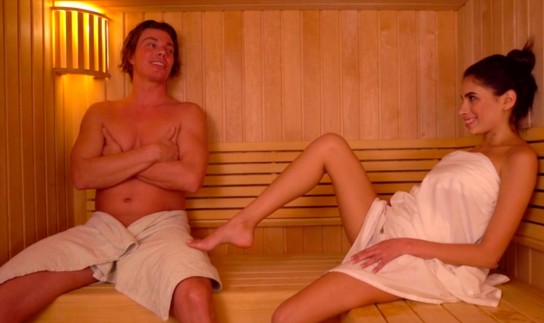If you want to have a good rest, spend time with friends, or improve your health, a Turkish bath is an excellent option for you. The technology, which is borrowed from the manufacturers of the Roman term, becomes only more and more popular over time.
Turkish bath or hamam (from the Arab "ham" - hot) began its existence in the VII century in Turkey. In the West and in America it became known only in the nineteenth century. In ancient times, having a hamam was a great way to demonstrate your financial and social wealth. After all, the construction of such a bath required a lot of investments and the availability of experienced craftsmen. Interestingly, even some religious temples were also rebuilt as a hamam.
Turkish bath hamam has become so famous for its distinctive features. Features of the Turkish bath:
- High humidity, reaches almost 100%
- Relatively low temperature, about 30-60 ° C
- Exquisite design. The materials that are used to build a bath is exclusively stone or marble. The walls are decorated with mosaics. The ceiling (arched or domed) usually resembles a starry sky.
- The presence of rooms with different temperatures, which provides a choice to the visitor.
- Soap massage, which promotes body relaxation, skin cleansing and emotional relaxation.
- Special heating system with water vapor.
What will we see if we decide to join the Eastern tradition of visiting the hamam? First we will visit the dressing room (Jamekian), where we should change clothes for a loincloth or a large towel and put on slippers with a wooden sole. The temperature in the locker room does not exceed 30 ° C. Then you can go to the room for washing (sugluk), where you need to wash, using peach or olive soap. You can steam out the body and prepare for the procedures in the steam rooms. And finally - the central hall (hararet), which is adjacent to all other rooms. The location of the remaining rooms relative to the central hall is often compared with the location of the fingers relative to the palm. Hararet is usually octagonal in shape. Here are located a place for massage, stone benches (sufa) and a bowl of water (chicken). The temperature in the central hall reaches 60 ° C.
The trademark of the Turkish bath is a soap massage. During the massage, a soap liquor is used (olive, black gassoule soap or soap with eucalyptus oil additives), which is foamed into the foam using a bag. The foam is applied to the skin and is distributed evenly throughout the body with massage movements. This procedure is useful for the body and soul. Massage relaxes muscles, helps cleanse the skin, speeds up the metabolism, excretion of toxins from the body. Beneficial effect on emotional state.
Turkish bath hamam, in general, is very healthy:
- Strengthens immunity.
- Helps to recover from colds.
- Helps relieve stress and fatigue.
- Contributes to the treatment of diseases of the musculoskeletal system.
- Makes the skin more elastic, helps to cleanse the skin.
- Has a positive effect on the nervous system..
- Promotes body rejuvenation.
Like other remedies with a therapeutic effect, the Turkish bath is not recommended for people who have such contraindications:
- cardiovascular diseases;
- asthma;
- eczema, psoriasis, or fungal diseases;
- increased body temperature, viral infections;
- cancer;
- inflammatory processes;
- increased pressure.
In general, a hamam is a bath for the widest audience, which is perfect for people with intolerance to such high temperatures as in a Russian or Finnish bath. This is not only a use for the body, but also a rest for the soul.

